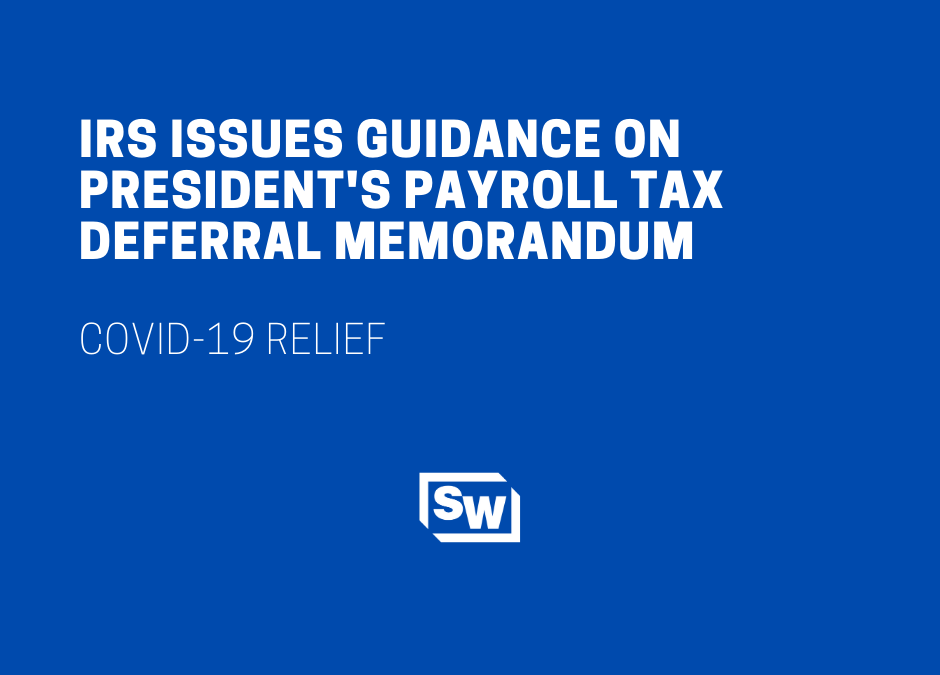On August 8, 2020, President Trump issued a Presidential Memorandum which allowed for the deferral of withholding an employee’s payroll taxes. On Friday, August 21, 2020, the IRS issued additional guidance on the implementation of the deferral in Notice 2020-65. The IRS notice can be found here. There are still a lot of questions that haven’t been answered and much of the information is vague. The key takeaways are below:
- The affected taxpayers are the employers that are required to withhold and pay the employee share of social security tax under section 3102(a) or the railroad retirement tax-equivalent under section 3202(a) (6.2%) and they are affected by the COVID-19 emergency.
- Neither the Executive Order nor IRS Notice 2020-65 require an employer to defer payment of employee OASDI taxes. Thus, an employer may choose to continue to withhold and deposit employee OASDI taxes as usual.
- This puts the option to allow for the deferral in the employer’s hand and it seems that the employer will be liable for the deferred taxes and making sure they are remitted prior to April 30, 2021.
- The deposit obligation for employee social security tax does not arise until the tax is withheld. Accordingly, by postponing the time for withholding the employee social security tax, the deposit obligation is delayed by operation of the regulations, therefore this notice does not separately postpone the deposit obligation.
- Applicable wages in which the taxes can be deferred are defined as paid to an employee on a pay date during the period beginning on September 1, 2020, and end on December 31, 2020, but only if the amount of such wages or compensation paid for a bi-weekly pay period is less than the threshold amount of $4,000, or the equivalent threshold amount with respect to other pay periods (I.e. $2,000 threshold for weekly payroll).
- The applicable deferred taxes must be withheld and paid between January 1, 2021, and April 30, 2021, or interest, penalties, ad addition to tax will begin to accrue on May 1, 2021, with respect to any unpaid Applicable Taxes.
- If it is necessary the affected taxpayer may make arrangements to otherwise collect the total applicable taxes from the employee.
It is our understanding that an employer can opt into allowing deferral of employee social security tax anytime during the Q4 period.
What’s Still Unknown?
There are still a lot of questions that haven’t been answered by the Executive Order or the IRS notice. Below are the items that we are still waiting for additional information or guidance on how to answer.
- If an employee leaves, is terminated or gets furloughed before the repayment period starts, how does the employer receive or collect the outstanding deferred payroll taxes?
- What happens if the employer cannot collect the taxes from the employee for any reason? Does the employer have to pay them to the IRS? Is the employer liable for penalties on late payment? Can taxes be collected from the “responsible person”, as payroll tax law defines it?
- If employees can elect whether they want to have their taxes withheld, how this election should happen?
- Vague information on instructions for how exactly employers should collect and remit any deferred payroll taxes.
- It is uncertain how this will all be reported on W-2s and 941s.
- President Trump talks about future forgiveness of the deferred taxes. Congress would have to pass a new law to do that and there is not even a draft of such a bill to review.
Sciarabba Walker will update our clients as additional guidance is released. If you have any questions, please reach out to your personal Sciarabba Walker contact or email us at info@swcllp.com.

